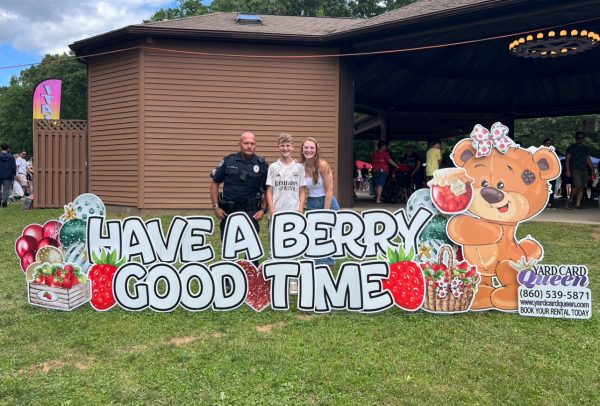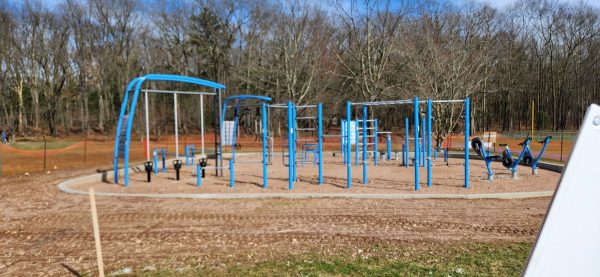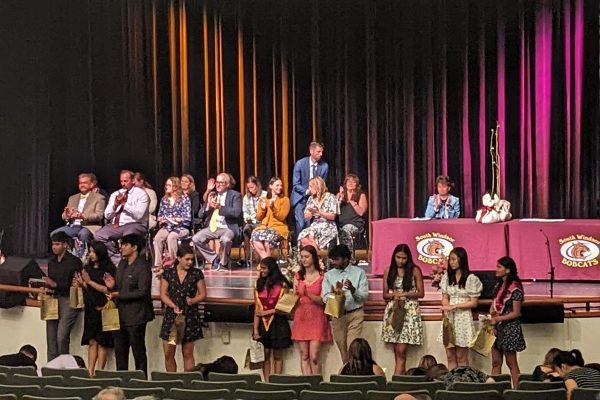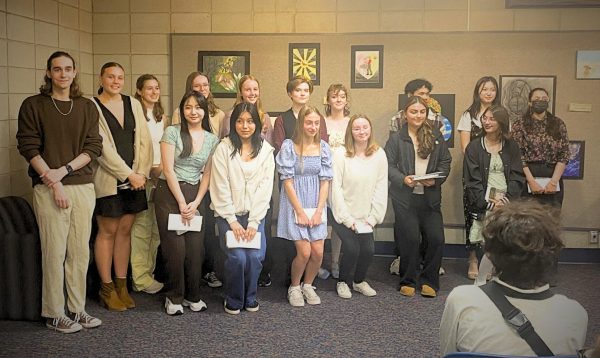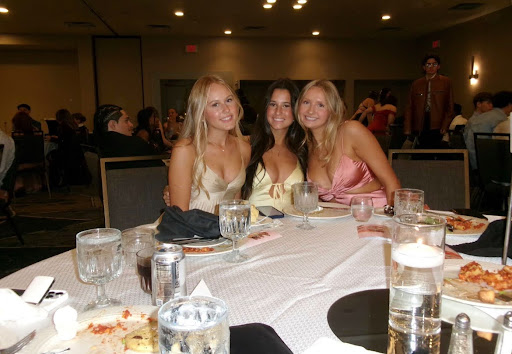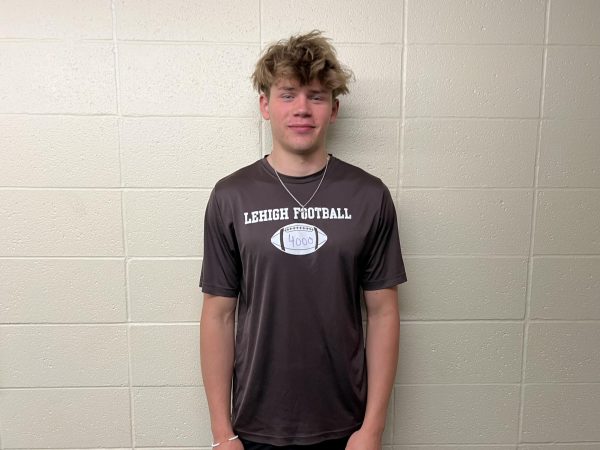100 Years Old, An Incredible Life’s Story
A WWII medic from the 12th Armored Division (The Hellcats)

John Drenga
Carl Leogrande sitting down for an interview with Katelyn Drenga
Leogrande is a reminder to remember history. To never forget about the people who risked their lives, so that we could live in peace. 100 years of age, the WWII veteran Charles (Carl) Leogrande walked in strong, strolling over to a green chair where he then sat and told me his story.
A good friend of my Grandpa´s, I’d seen Leogrande many times before that day. However, it wasn´t until this summer that I learned about his experience in WWII.
Living in Mystic CT, only five minutes away from my grandfather, many times he’ll drive to the house (yes he still drives at 100) to sit and relax by the breeze of an open window, enjoying the ocean view on his green rocking chair while talking and having a sandwich from the local market.
Yet, while relaxing now, Leogrande once was a WWII medic risking his life to bring aid and support to injured soldiers on the front line.
Eighty years ago, a 19-year-old Carl was drafted as a soldier in WWII. He explained that without hesitation he agreed to serve his country.
After training, Leogrande became a tank driver for the 12th armored Division. However, he’d later become a medic.
According to Hellcats: The 12th Armored Division in World War II, the 12th armored division was one of the 38 war divisions and 9 armored divisions activated in 1942. First formed at Camp Campbell in Kentucky, the Division (generally referred to as “The Hellcats”) was later transferred to Abilene, TX which is where the 12th Armored Division memorial museum stands today.
After a tank in front of him flipped over, Leogrande said he immediately rushed over to help. Able to utilize skills from boy scouts; he fixed the guy up quickly.
An officer from the other side of the scene saw Leogrande helping this soldier out, and asked him to be a medic, so he did.
In his days as a medic, Leogrande traveled with members of his division to England, France, and Germany. He also would later travel with his division to the Battle of the Bulge.
Up on the frontlines with the fighting forces, Leogrande explained that he was trained to use splints, how to stop bleeding and how to use morphine. To go a step further, Leogrande actually replaced his original bag by converting an extra weatherproofed ammunition case into a medic bag, painting a red cross on the case so it wouldn’t be mistaken for ammunition. He did this so that in the chaos his supplies would be shielded from getting ruined.
On the battlefield, Leogrande explained that whenever he heard ¨Leo!¨ being called out from a distance it meant someone became injured and they needed his help. Leo was a nickname for his last name.
Leogrande explained that, ¨It taught me to appreciate everyday,and also that I never want to be a medic again.¨
When later asked about the most important value he learned throughout the war,Leogrande said, ¨To always take care of one another¨
That value has certainly not faded, as it’s seen consistently in his personality. A guy with a thoughtful,gentle character, Leogrande allows others to feel comfortable and welcomed. He’s always thankful, kind and amiable, greeting everyone when he stops by.
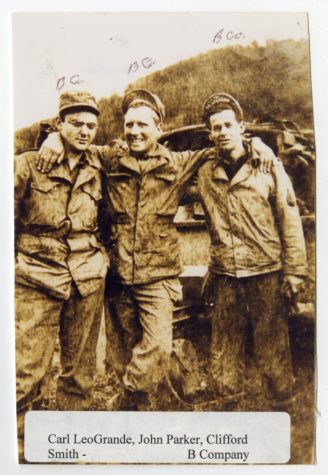
One guy he became good friends with during the war was Donald from Minnesota, “I used to see him a lot,” Leogrande explained. Here he is pictured on the far left with two other soldiers, John Parker and Clifford Smith.
And while most of these values and experiences were derived through fellow soldiers, Leogrande also added that American soldiers were not the only ones he learned from, ¨Americans learned from the Germans; developed strategies from them,¨ Leogrande said.
He expanded further on that idea, retelling the time a civilian from another country invited him over for dinner.
After returning home safely at 22, Leogrande started an Oil business and met his wife Annabelle on a blind date. He would stay with her for 50 years until she sadly passed away in 2003.
After the war ended the media erupted with films, highlighting WWII. A viewer of a few of these I always wondered how they actually compared to soldiers’ true experiences in the war.
Asking Leogrande his thoughts on war in movies he described that all the guys, “acted like Macho men. We were just regular guys,” Leogrande said.
A brave and humble veteran, last year Leogrande was recognized in a Congressional address. The record explained how, “Leogrande continues to attend every reunion of the 12th Armored Division. Though 782 members were lost during the war, 14 of them still remain, and Mr. Leogrande looks forward to joining his fellow soldiers for their 2022 reunion, which will take place in Texas,” Congressional Address- Senate.
“We meet every year, and are the only division with our own museum,” Leogrande said.
A few months after being recognized in the address, Leogrande flew down to Texas for the annual reunion. Roughly 1,800 miles from CT in Abilene, TX, it’s a long way, but a trip important to him, to the other soldiers, to his country. These people mean so much to him.
Shortly after his trip to Texas, the 12th Armored Division Memorial Museum posted about the experience stating: “One of the best moments this year was being able to take two of our WWII veterans, Chuck Brown and Carl Leogrande on a halftrack ride during the reunion”-Facebook
Out of the 11,000 soldiers in the 12th Armored Division, (up to 1000 in a battalion). Leogrande is one of the 14 left, and is the only one who can still walk unassisted.
So in all the world’s chaos, in all the uncertainty and violence, stand for Leogrande. Stand for the 11,000 soldiers in the 12th Armored, and the 782 of them who couldn’t make it out. Stand for 16 million U.S soldiers: 407,316 killed. Leogrande stands as a reminder to us all, to honor the ones who fought for us all. To not kneel, but stand for the good in the world, the brave in the world, the United in USA.

Katelyn Drenga is a senior and second year journalism student at SWHS. She loves the outdoors but also is a fan of bingeing Netflix with friends. This year, Drenga is a section leader for News and Politics...


